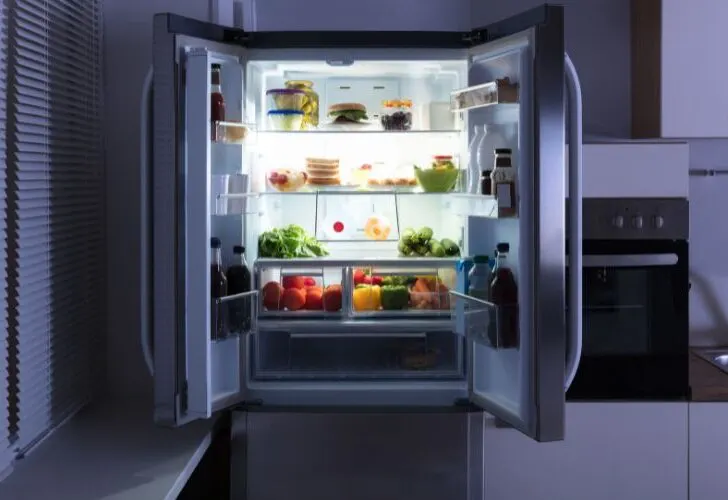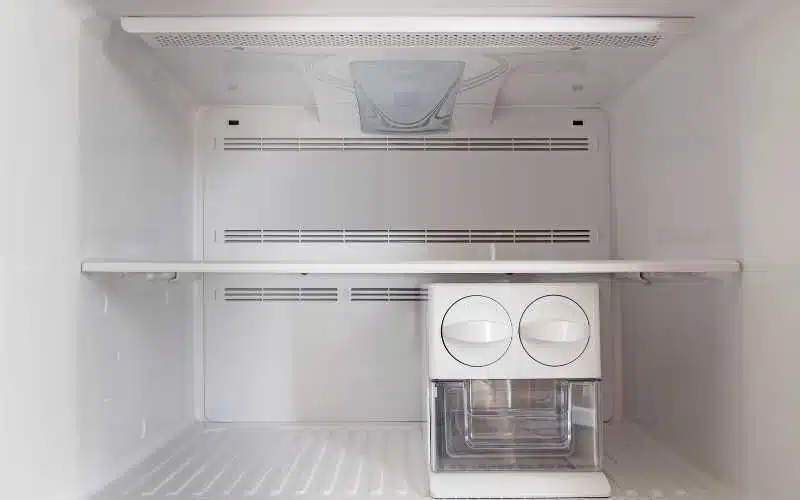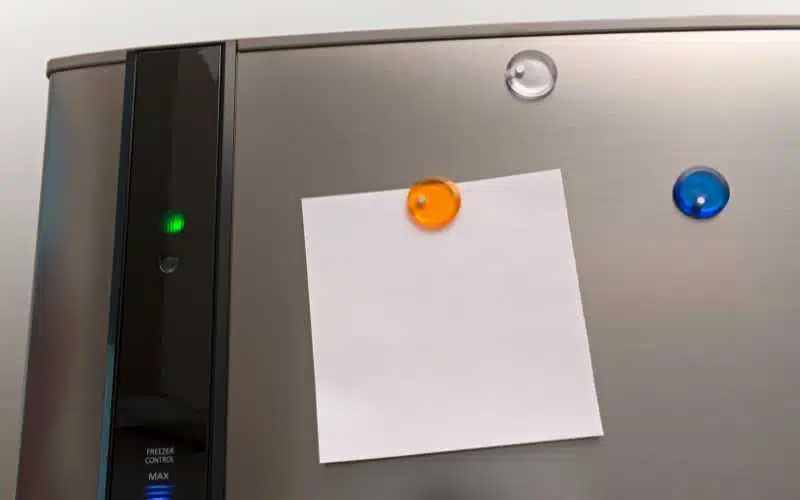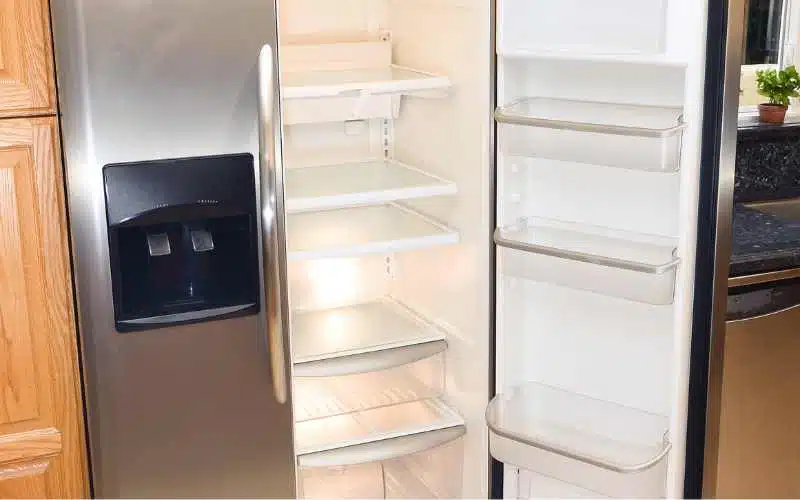Getting a new refrigerator, you may wonder what the cubic feet of the refrigerator are. Every refrigerator model has a particular cubic foot and size.
It varies depending on the product and the model of the refrigerator because many refrigerators look like they’re the same size but, when measured, will become different.
Though you might want to know the size of your fridge but don’t know how, then you might want to follow a few instructions that’ll be listed below
You check out the cubic feet and size of your refrigerator. First, you check the model number of the refrigerator, and you can also search online for specifications on the particular model of refrigerator you’re using. You can also get a tape rule, measure the refrigerator’s length, depth, and width, and then multiply them to get the cubic feet.
How Do You Tell the Size Of a Fridge From Its Model Number?

The model number of most refrigerators comes with the size of the fridge.
So, for example, if the refrigerator’s model number is ABC20, then the refrigerator is 20CuFt, and if the refrigerator’s model number is FGH17, then the size of the refrigerator is 17CuFt.
Not all refrigerators have the size of it written in their model number. For example, a model number like RTF2H doesn’t have the refrigerator size specified in it.
Don’t you say the size of the refrigerator is 2 because it’s the only numeral in the model number? If you have something like this, you can use another method to get the size of a refrigerator or freezer.
The model number of a refrigerator always comes written on a label placed on the refrigerator.
All you need to do is look for the label, as it does not have a particular location where you can find it.
The label carries the model number, size, voltage, and other necessary refrigerator specifications.
If your refrigerator is old and the label is out, you might want to consider using a measuring tape to determine the size of your refrigerator.
The model number method is the easiest method for getting the size of a refrigerator or freezer because you have to read the model number and get your refrigerator’s size.
How Do You Read a Refrigerator’s Model Number?
Different companies’ products have different ways of reading their model number.
However, model numbers carry essential information in them which are helpful to both the manufacturer and the person using them.
So always check the model number of your refrigerator; if you don’t understand what they mean, you can check it out on the internet.
A model number is a unique identification number of a product with the date or year of production.
Model numbers come in different forms and meanings depending on the manufacturer’s chosen style.
The style of the model number of the Thermocool refrigerator will not be the same as the style of the model number of a Samsung refrigerator. They all differ
Below are the specifications and vital information to help you read the Samsung refrigerator’s model number.
What Does Cubic Feet Mean in a Fridge?
The cubic feet of a refrigerator are known as the capacity of that refrigerator. That is the total usable volume of the refrigerator.
It is also the overall volume of foods and other items that the refrigerator can contain or carry with the unit of measurement CuFt.
The most common definition of cubic feet of a refrigerator is; that the interior height, width, and depth of a refrigerator are all multiplied.
To measure this, you have to remove every item in the refrigerator and then take a measuring tape to get your measurements of the length, width, and depth.
The cubic feet of refrigerators can be known or gotten in 3 different ways. These ways will be helpful to those who want to know the cubic feet of their refrigerator but don’t know how to go about it.
There are:
#1. By Model Number
The model number of some refrigerators comes in cubic feet. So, for example, a Samsung refrigerator with model number RF28HMEDBSR will have cubic feet of 28.
And this will save you more time using a measuring tape to measure the size of your refrigerator interiors.
Note that not all refrigerators’ model number contains the size or capacity. Do not try to figure out the model number of a refrigerator with all letters, all numbers, or even single numbers like 2.
They come in different forms like numbers, numbers mixed with letters, and sometimes letters only. Using this method is impossible, so you should use other methods.
To get the model number of your refrigerator, look for the label of your refrigerator. The label carries all applicable information and specifications of the refrigerator.
When you see the label, search on it for the model number. Always remember there’s a difference between a refrigerator’s serial and model numbers.
#2. By Searching Online
If your model number doesn’t have cubic feet ( all letters or single numbers in a mix of letters), this method will be the best for you.
After the model number method, this is the best, but it’s not favorable to those who can’t get it through their model number, so this is preferable.
All you need to do is search the refrigerator’s specifications online. You can also search it on the manufacturer’s website for the specifications.
If you’re searching for the specifications online, always ensure to put in the model number correctly so as not to get the wrong size of another refrigerator with that model number.
#3. By Measurement
Measurement is the most stressful but reliable method to get the size of your refrigerator.
To do this, you need a measurement tape that’s long enough to go around the refrigerator from the inside of it, then a book and pen to write down your results, but if you can still remember them, you can skip using the pen and paper.
For example, if the width of a refrigerator is 3, the depth is 2, and the height is 4, all in feet. Then, we will calculate the capacity as:
Capacity (CuFt) = Height (ft)×Width (ft) ×Depth (ft)
=4×3×2
=24 Cu.Ft.
The formula depends on the unit of measurement used in measuring the values.
In feet: Depth ×Height×Width ÷1728=cubic feet
In yards: Depth ×Height×Width ÷27=cubic feet
In cm: Depth ×Height×Width ÷28316.85=cubic feet
Before using these formulas, know the unit of measurement of the measuring tape you’re using to use the right formula.
Use the wrong formula for a different unit of measurement. For example, you might have a significantly higher or lower value than the supposed value of the cubic feet of your refrigerator.
How to Calculate Fridge Capacity In Liters?
Calculating the fridge capacity of your refrigerator in liters, also called the volume of your refrigerator, is easy.
All you have to do is look for the label on your refrigerator; after you’ve found your label, check for the volume of the refrigerator or capacity in liters. Then you’ve got what you want.
But if the label is worn out or has fallen off, all you need to do is calculate the cubic feet of the refrigerator using one of the formulas listed above.
Then, after you’ve gotten the cubic feet of your refrigerator, multiply its value by 28.3 to get the volume or capacity of the refrigerator with the unit of measurement in cubic liters.
For example: Calculate the volume of a refrigerator in liters, with height 6ft, width 4ft, and depth 3ft.
Volume (l) =Capacity (CuFt) ×28.3
Capacity (CuFt) =Depth (ft) ×Height(ft) ×Width(ft)
=3×6×4
=72 CuFt
Volume =72×28.3
=2,037.6 CuL
Therefore, the volume is 2,037 cubic liters.
Conclusion
Knowing the volume and capacity of your refrigerator is essential. Unfortunately, the refrigerator isn’t a perfect square, there are some compartments, and this tends to be challenging to know the actual size of it.
Check the labels of your refrigerator for vital information regarding your refrigerator.





